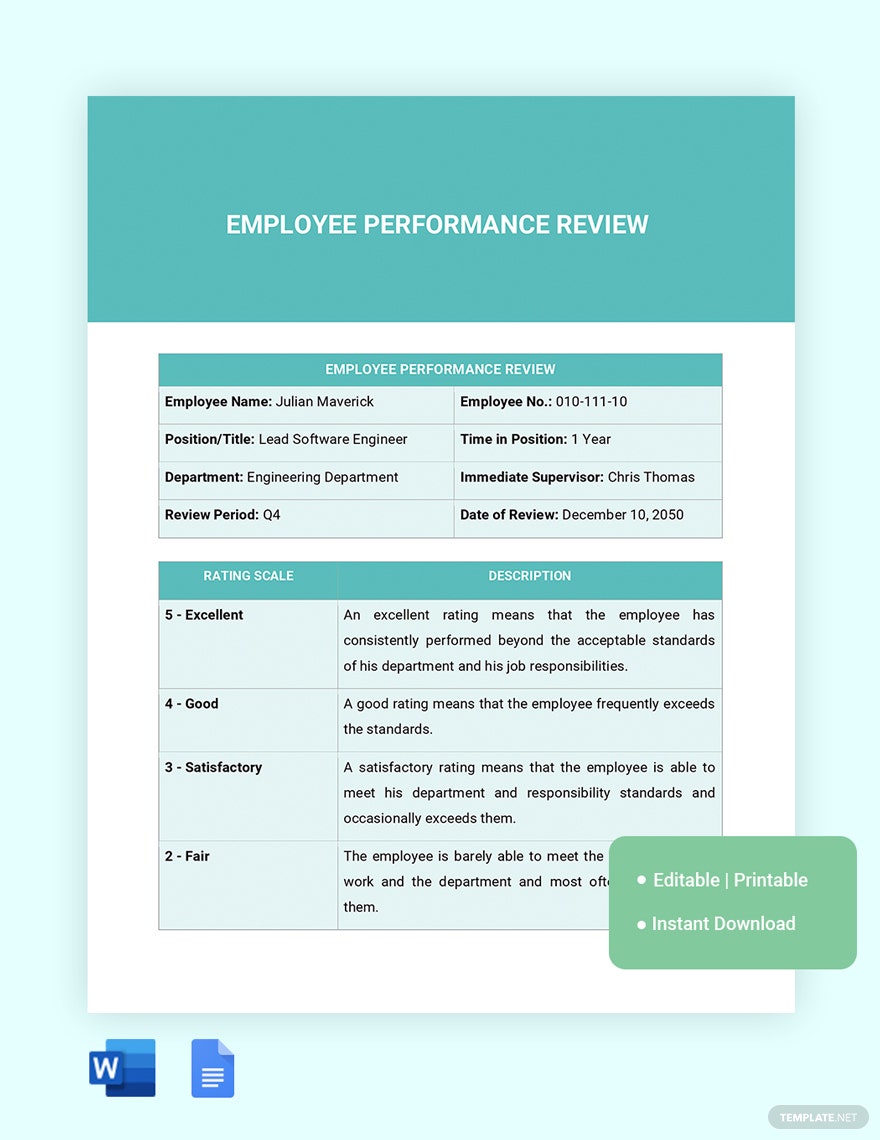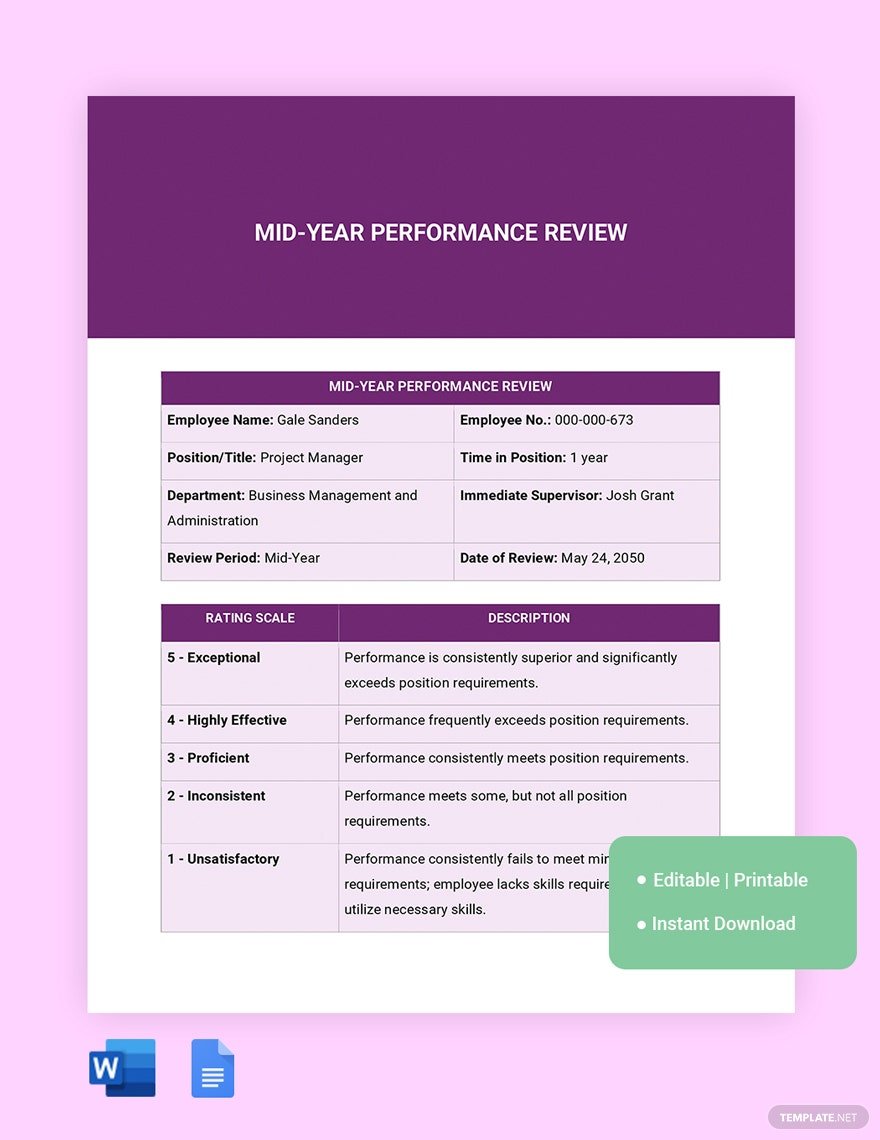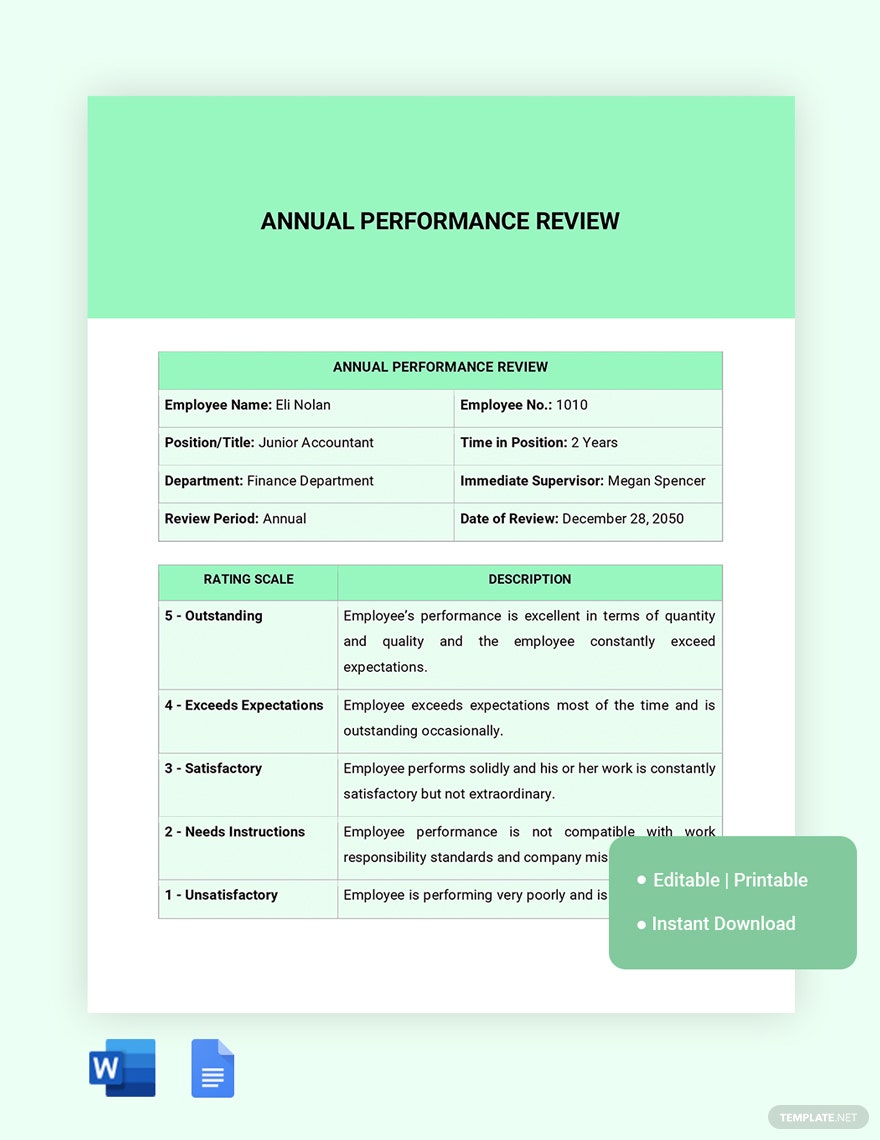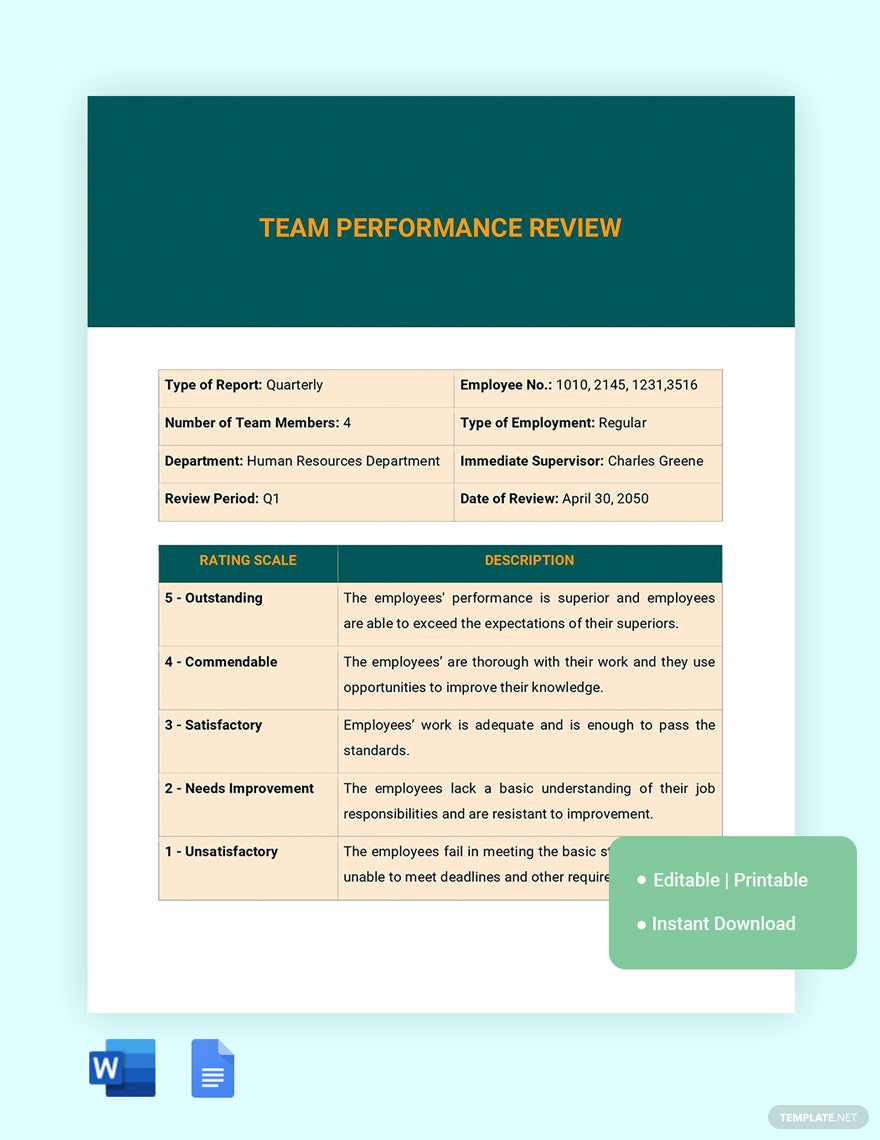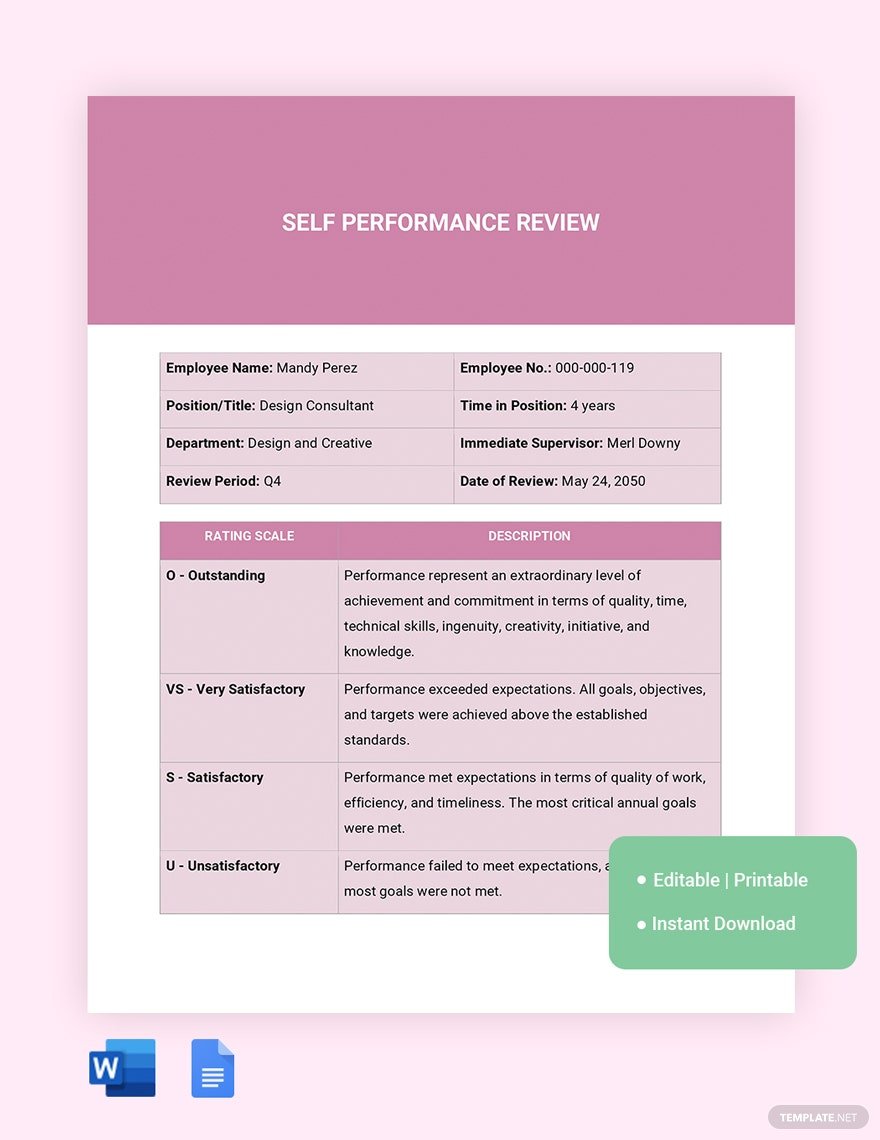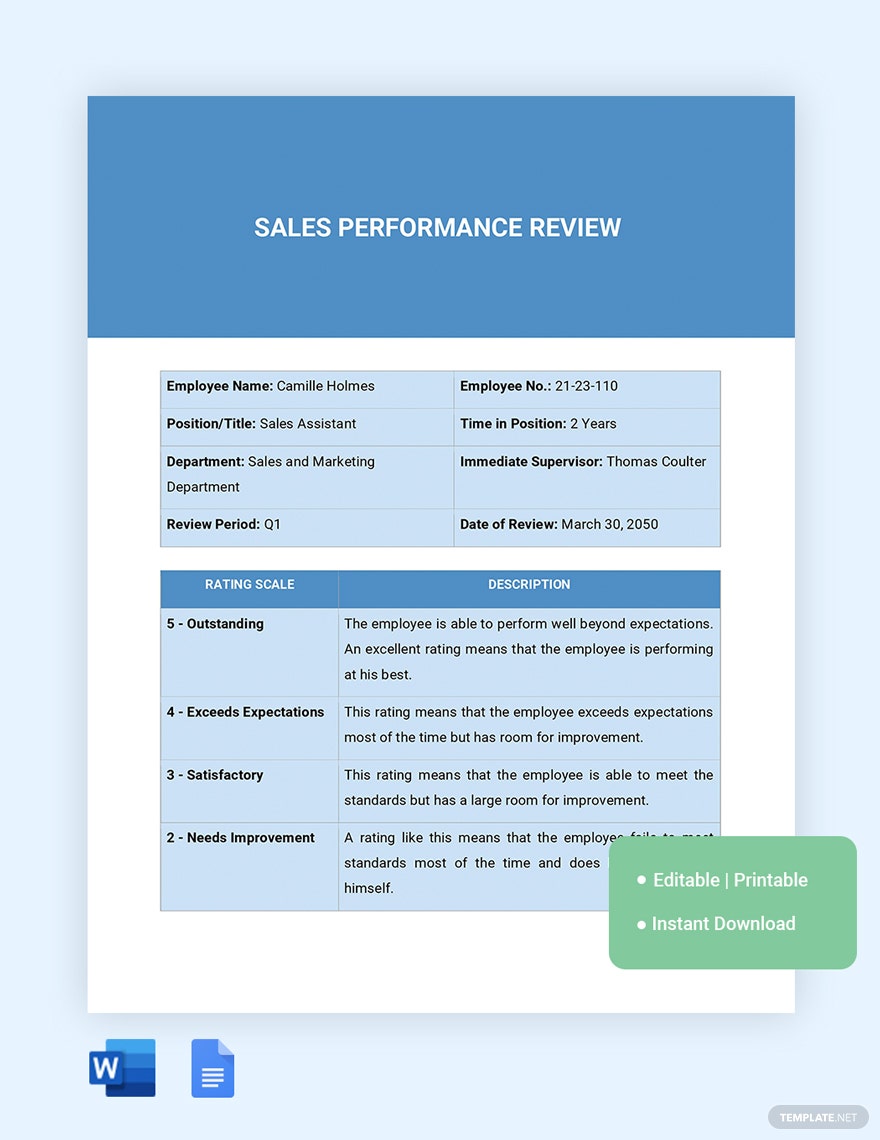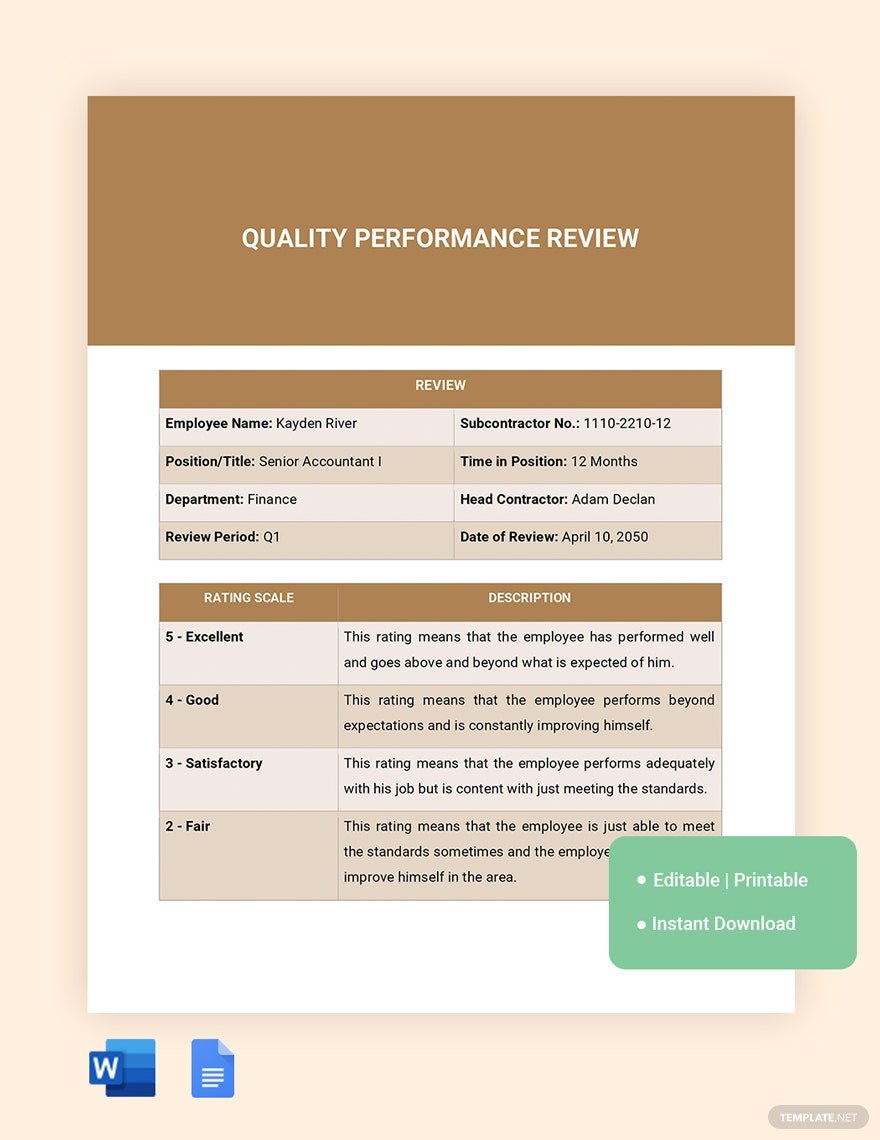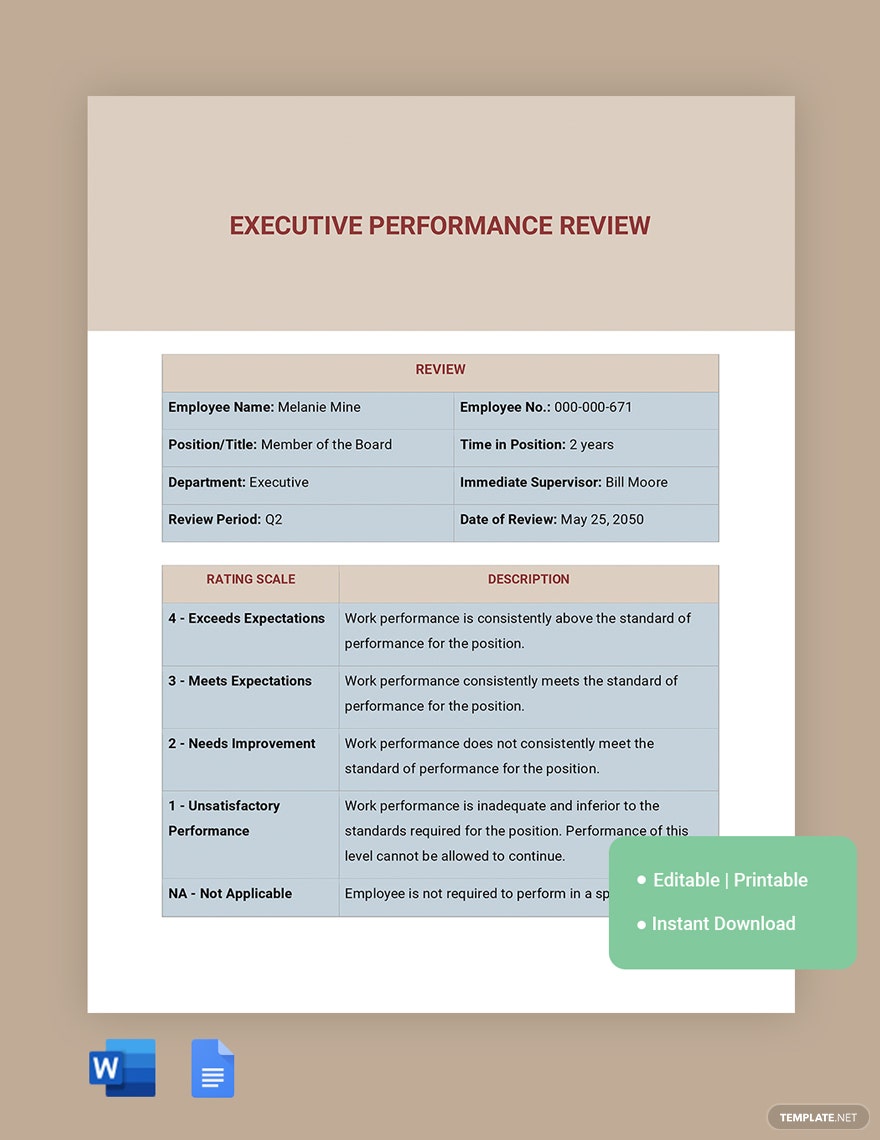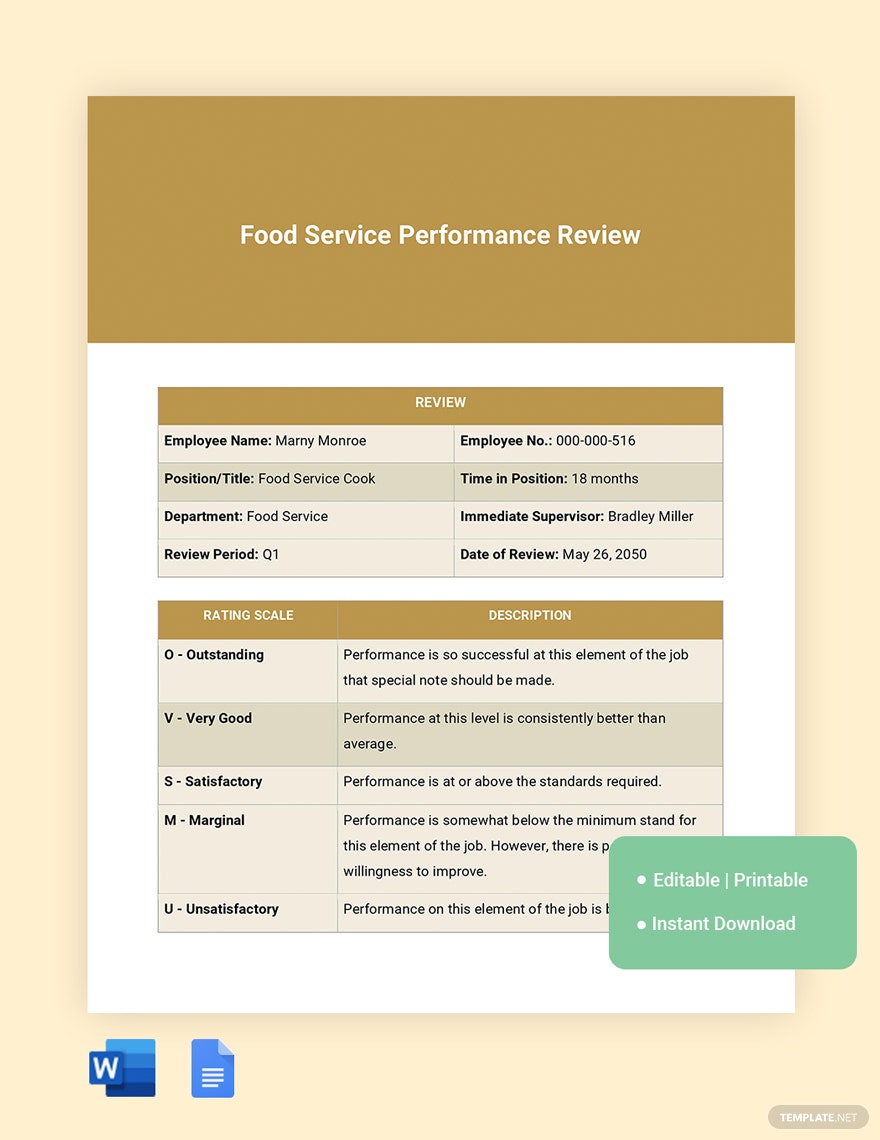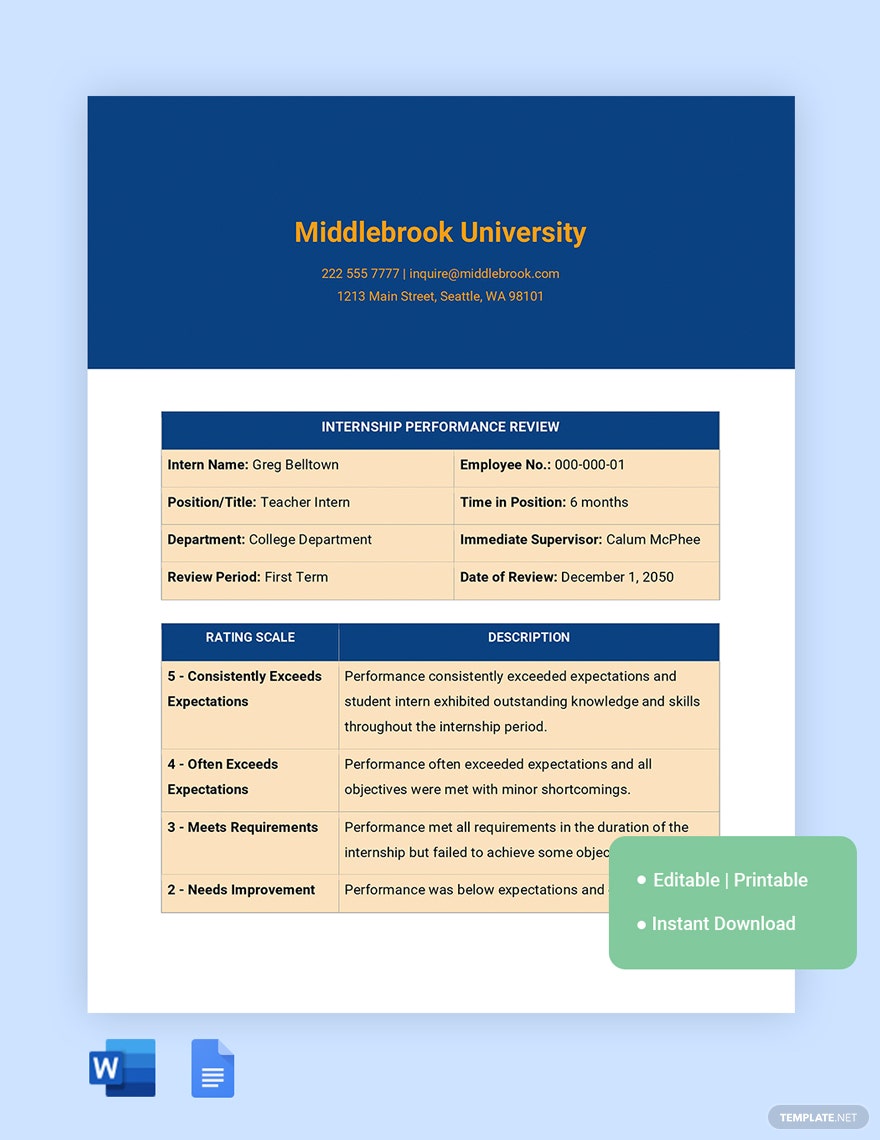Table of Contents
- Performance Review Definition & Meaning
- What Is a Performance Review?
- 10 Types of Performance Review
- Performance Review Uses, Purpose, Importance
- What’s in a Performance Review? Parts?
- How to Design a Performance Review
- Performance Review vs. Performance Appraisal
- What’s the Difference between a Performance Review, Evaluation, and Performance Management?
- Performance Review Sizes
- Performance Review Ideas & Examples
- FAQs
Performance Review
Performance reviews are the eye-openers of reality when it comes to meticulously gauging and evaluating the performance of a student, employee, program, or any subject. The review process and assessment are made possible thanks to a detailed document called a performance review, and it has been a staple measurement tool in performance management.
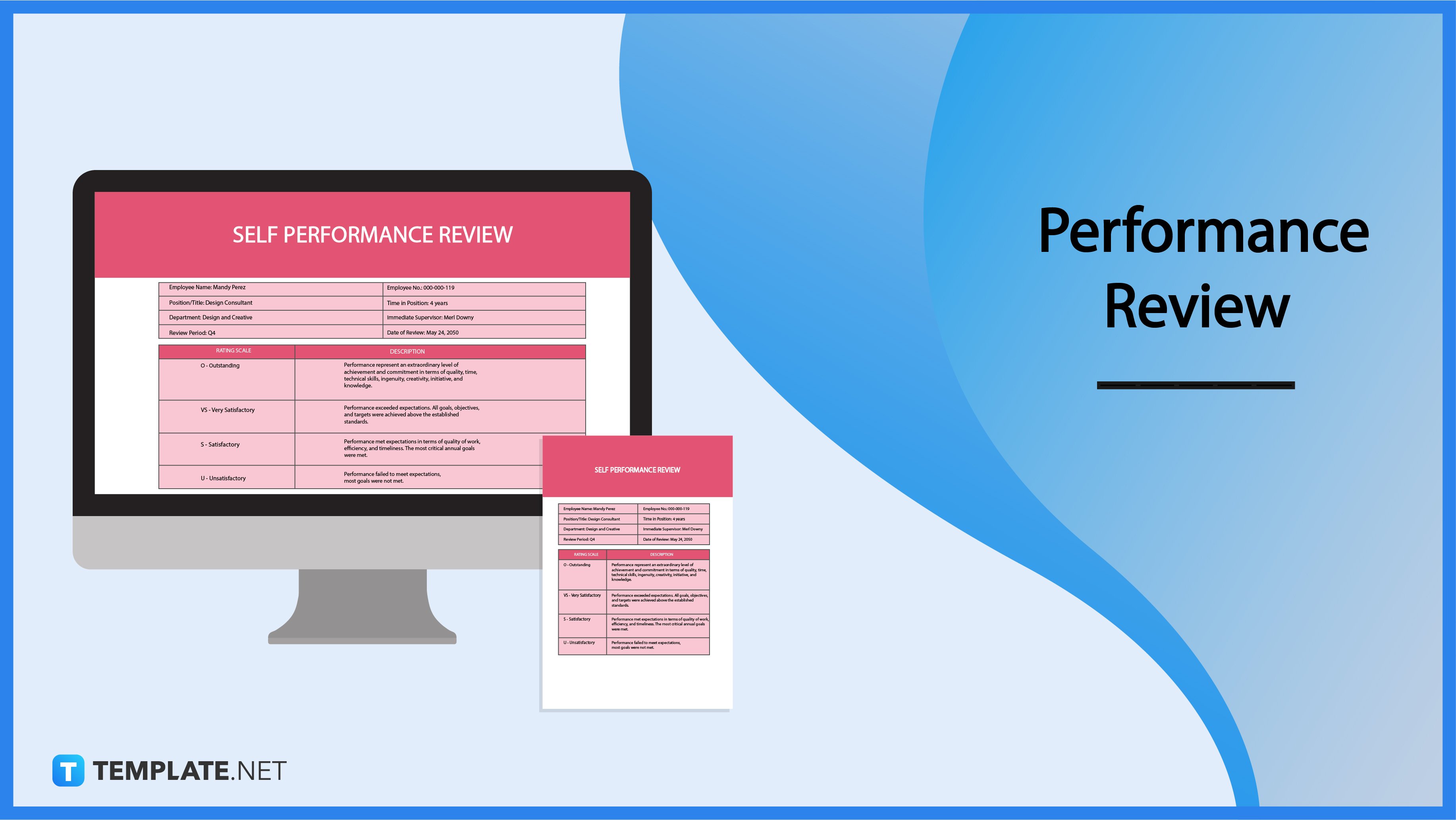
Performance Review Definition & Meaning
Performance reviews are a form of assessment document that is often used to evaluate an employee’s performance at work, but they also come in different types and concerns where you can focus on assessing daily performance, supervisor’s performance, sales performance, and many more.
A performance review is one of the many supporting tools of a performance management system to ensure that performance strategies and the purpose behind them are met during the actual review.
What Is a Performance Review?
A performance review aims to check how a subject of concern is performing, give constructive comments, recognize strengths and weaknesses, and excel with better performances in the future. The performance review document is used like an evaluation sheet where a subject’s performance is assessed in different categories and the scores are tallied using a rating system. The formal assessment conducted in a performance review is common in the workforce to raise awareness of how things are going and to make sure improvements are set.
10 Types of Performance Review
Employee Performance Review
The most widely used type of performance review is the employee performance review. You are evaluating whether an employee’s performance is satisfactory or unsatisfactory in different categories including attendance, communication, customer service, teamwork, productivity, quality, and more. This is used to assess an employee’s job performance to distinguish the top performers from those who need more training.
Mid-Year Performance Review
When a performance review is done every middle of a 12-month period, it is referred to as a mid-year performance review. It is a type of periodic performance review and may focus on any field such as the staff’s mid-year performance, the enterprise’s sales mid-year performance, goals’ progress mid-year performance, and more. Make sure to specify what or who is being assessed and that it should be conducted every mid-year.
Annual Performance Review
A periodic performance review that is managed per year falls under the annual performance review. With the term “annual,” you can tell that the performance assessment occurs on a yearly basis and you should expect a lot of changes in the performance when comparing one year to another. Rather than simple yes-or-no questions, the Likert scale rating system is most appropriate for an annual performance review.
Team Performance Review
Oftentimes, teams are being evaluated as a whole, and this is where the team performance review enters. The team performance review is a collective type because you could have a performance review for the whole HR department, for team leaders, for the sales team, and for the customer service team. Team performance reviews are used by companies with so many employees wherein teamwork or group performance must be gauged.
Self Performance Review
A unique performance review is when no third party is involved and the person whose performance is being evaluated is the same evaluator. A self performance review is where self-assessment plays out well because one’s self-awareness is tested. Although biased opinions may be present, they are still important to check how highly or self-depraved someone is, especially after comparing one’s self-performance review to another with a third-party evaluator.
Sales Performance Review
The sales performance review can be done monthly, quarterly, or even annually as long as the main concern involves sales. This is used to assess a sales representative’s performance in productivity and quality, or to evaluate the company if sales were profitable in a year. Sales performance reviews usually tackle individual performance, team performance, quantitative goals and objectives, work quality, and strategy improvement.
Quality Performance Review
Quality of work performance appraises more than just how productive or lucrative one’s performance is. Quality denotes if performance meets the qualitative standards. Using a quality performance review, you don’t deal with quantitative data because quality performance concerns more if an employee does one’s work excellently, whether a product’s design meets the standards and other quality-driven requirements.
Executive Performance Review
Indeed, the higher-ups are usually in charge of assessing employees or team members but you have to know that even the boss, manager, supervisor, or executive department must be evaluated too. Even those who belong to high-ranking positions may commit mistakes or failures in performance as no one’s perfect. Thus, the executive performance review is a proper example to gauge the executive’s overall performance.
Food Service Performance Review
A restaurant manager, food service administrative assistant, restaurant receptionist, chef, cook, or anyone who belongs to the food industry should be assessed regularly. A food service performance review is a decent example that you can use for appraising anyone from the food service industry. Quality standards regarding food preparation, products, and overall services are examples of what to evaluate in this type of performance review.
Internship Performance Review
Those who are taking an internship will eventually be rated in terms of performance. Optimize an internship performance review once the intern is done with the required hours to take in the internship program because the document will be used as a reference as to whether the intern has performed satisfactorily or not. Hence, watch out for how interns performed during their internship to easily manage an internship performance review.
Performance Review Uses, Purpose, Importance
Performance reviews are the perfect approach for organizations to be more competitive and much stronger in the industry, but how exactly does that work? Understanding the key functions, purpose, and significant reasons behind using a performance review document can surely be an insightful journey that prompts you to conduct regular performance reviews moving forward.
Reviews a Range of Possible Subjects and Categories
Performance reviews may depend on whether your concern is related to productivity, quality, profit, and more. There are many topics to evaluate and the need to check will carry out benefits in the future. Examples of benefits include how employees can reach their full potential, how the products’ sales impact the company, or how an entire organization becomes more competitive.
Gathers Both the Positive and the Negative Aspects of Performance
Strengths and weaknesses regarding performance are covered in a performance review. That means there is a balance when it comes to assessing something or someone because focusing only on the positive comments will turn a blind eye toward the negative factors. On the other hand, recognizing solely the negative aspects of performance would dishearten people because it is also essential to recognize accomplishments.
Conducts Unbiased Assessments for Awareness
More so on bringing the good and the bad side of performance, expect performance reviews to provide unbiased ratings. Instead of simply believing that a company is doing well according to what you see on the surface, performance reviews take a deep dive into assessments for awareness purposes. It is better to learn the truth to be aware of what is going on rather than easily concluding that all performances are good.
Observes Regular Performance Monitoring
A performance review may be done weekly, biweekly, monthly, quarterly, or annually. The point is it isn’t just a one-time assessment program. The performance reviews must happen regularly because everyone might become too complacent that nothing’s wrong without a formal assessment summary, constructive feedback, and other answers gathered from a performance review.
Adapts to the Evolution of Performance Strategies
If work performance is expected to improve every time an issue ensues, the same importance applies to how strategies evolve be it according to trends, competition, and simple development. Keep watch on changes to performance strategies because you would need to update the process, metrics, and other elements in your review. That said, nothing stays permanent on what or how to perform in any industry.
What’s in a Performance Review? Parts?
Statement of Purpose
The statement of purpose clarifies what the performance review is for, such as whose/what performance is being evaluated. Clarify the purpose behind making a performance review in this section including what objectives and intentions to cover are.
Employee or Subject’s Information
Identify the full name of whose performance you are about to assess or what specific entity you are evaluating. There can be a lot of employees in one organization and specifying the employee or subject’s info is essential to avoid mixing up one’s performance with another person.
Date
The date marks the exact day, month, or year the performance review is being conducted. You can also note here what period the performance review should take place whether it is a daily, weekly, monthly, or annual performance review.
Criteria
The itemized criteria are the reason performance reviews matter because you can rate different categories and elements of performance according to the enlisted items in the criteria. This is where you categorize what to evaluate such as an employee’s attendance, work quality, productivity rate, teamwork, leadership, and more.
Ratings
The rating system is where you jot down your scores for every item in the criteria. It works differently depending on the rating scale you use because you may simply just encircle choices for answers or perhaps rate from one to five like on a Likert scale.
Comments or Feedback
A blank section for writing feedback or comments is paramount to any performance review. This is where you jot down observations or criticisms about a performance that isn’t simply rated according to multiple answers.
Reviewer’s Name and Signature
Whoever conducts the performance review should write one’s name and signature at the bottom part of the document. The standard is to write in all caps and affix one’s signature above the print name.
How to Design a Performance Review
1. Set your preferred Performance Review Size
2. Identify the main reason for making a performance review
3. Edit a Performance Review Template
4. Insert the performance review’s basic parts
5. Observe an easy-to-follow format, layout, and design
6. Save everything and publish it
Performance Review vs. Performance Appraisal
A performance review’s main target is to comprehend the current strengths and weaknesses of an employee or subject’s performance and to create goals for optimum performance in the future; it tackles the latest performance.
A performance appraisal’s focused target is to evaluate the entire performance of an employee or subject within the past week, month, or year; it deals with the previous performance.
What’s the Difference between a Performance Review, Evaluation, and Performance Management?
A performance review is a significant tool in any organization’s performance management program to check how someone or something has performed at a certain period.
An evaluation refers to the process of making an unbiased judgment about something or someone, and it is simply one step of a performance review.
Performance management refers to the bigger picture of handling an employee or subject’s performance, and it aims to make sure the predefined goals, mission, or purpose of an organization are observed in the performance.
Performance Review Sizes
Performance review documents vary in the number of pages depending on how detailed the review is, such as weekly performance reviews that cover a week while annual performance reviews cover a whole year. Nonetheless, performance review sizes are uniform to the standard review document sizes.
|
Format |
Inches |
Millimeters |
| Letter | 8.5” x 11” | 215.9mm x 279.4mm |
| Legal | 8.5” x 14” | 216mm x 356mm |
| A4 | 8.3” x 11.7” | 210mm x 297mm |
Performance Review Ideas & Examples
Don’t run out of concepts while crafting a performance review document because there are plenty of performance review ideas and examples available for reference. The key is to check if the type of performance review you’re creating meets the purpose behind the document.
- One-Page Performance Review Ideas & Examples
- 360 Performance Review Ideas & Examples
- Marketing Performance Review Ideas & Examples
- Weekly Performance Review Ideas & Examples
- KPI Performance Review Ideas & Examples
- Nurse Performance Review Ideas & Examples
- Lawyer Performance Review Ideas & Examples
- CEO Performance Review Ideas & Examples
- Teacher Performance Review Ideas & Examples
- Agency Performance Review Ideas & Examples
FAQs
What skills should I evaluate in a performance review?
A standard performance review usually covers the following skills: teamwork, communication, problem-solving, attendance, quality, and productivity.
What is the purpose of a performance review?
A performance review exists to effectively assess an employee or any subject matter’s performance by identifying the strengths, weaknesses, and possible goals for excellent performance moving forward.
What do you do on a performance review?
Plan the performance review weeks before conducting the review itself, ask the right questions, set the proper rating system, evaluate the subject according to the document’s criteria, note the notable results, give ideas on how to improve, and keep track of the subject’s progress.
What are the five performance ratings?
The five performance ratings mean: outstanding (5), exceeds expectations (4), meets expectations (3), needs improvement (2), and unacceptable (1).
Who conducts performance reviews?
It is generally the supervisor or whoever is in charge of assessing or appraising employees.
What should you not do in a performance review?
Don’t be too generic with the answers, avoid simple yes-or-no questions, and don’t simply criticize your subjects because you should focus on helping them improve.
What are the three main performance review methods?
These are 360-degree feedback, forced distribution, and management by objectives.
What are the parts of a performance review?
These are the purpose statement, employee information, date, criteria, ratings, comments, and reviewer’s name/signature.
Can you be fired if you fail during a performance review?
It depends on the contract if failing the review would get you fired; however, most companies do help you improve if you fail or announce early before you actually get terminated.
What are the five important performance management tools?
These are performance reviews, 360-degree feedback, reward and recognition programs, key performance indicators (KPIs), and personal development plans (PDPs).





